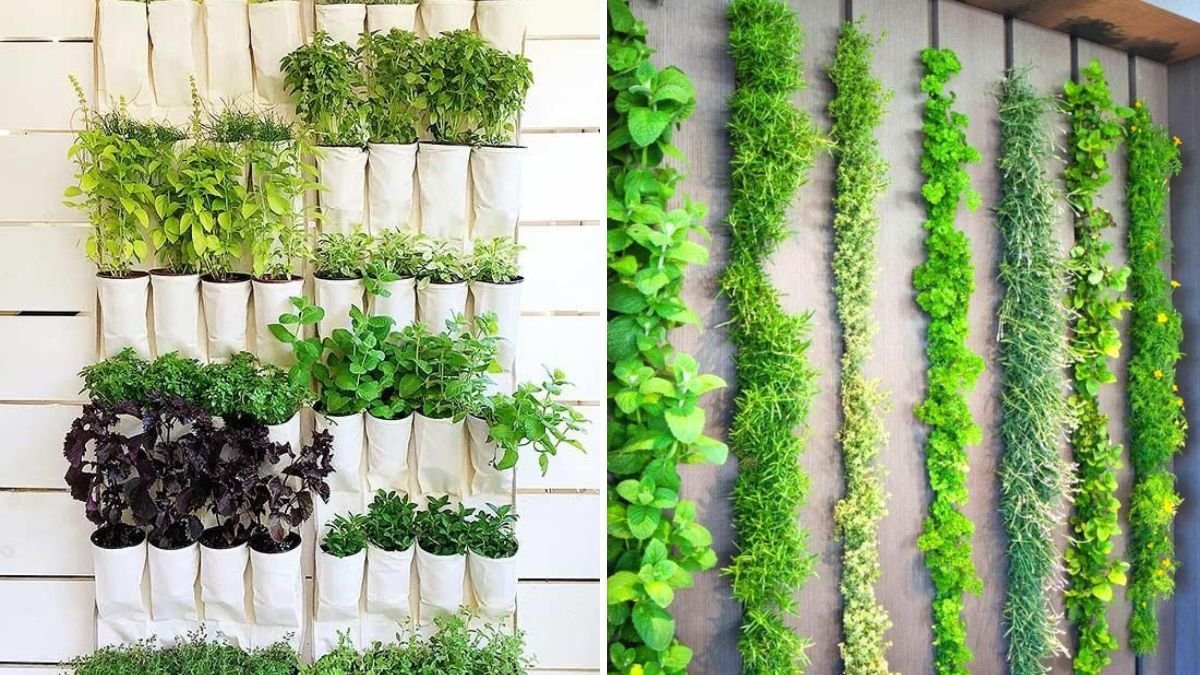As urban living spaces shrink and balconies become smaller, gardeners are discovering creative ways to grow fresh herbs without taking up valuable floor space. One of the most innovative solutions is a vertical herb garden on a wall, which allows you to cultivate a wide range of herbs in a compact, visually appealing, and highly functional setup. Not only does it provide fresh ingredients for cooking, but it also adds a lush, green aesthetic to your home.
This guide explores planning, choosing the right herbs, selecting containers, building the structure, planting, maintenance, and harvesting techniques for a thriving vertical wall herb garden.
Why Choose a Vertical Herb Garden?
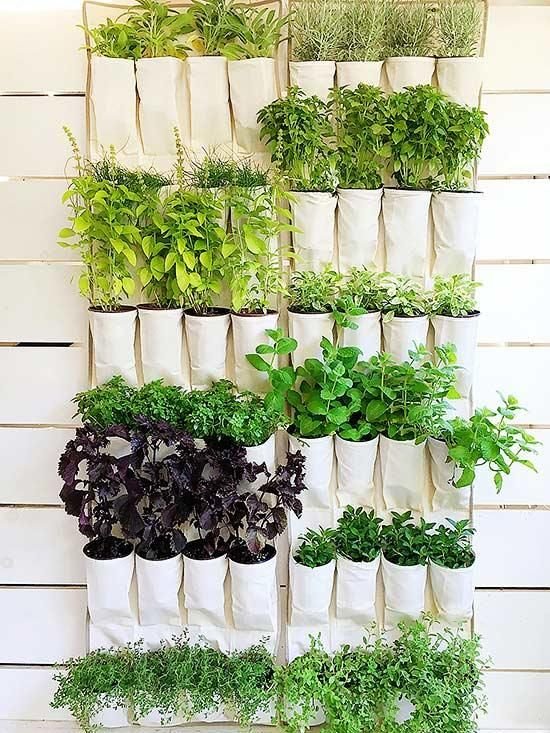
Vertical herb gardens offer several advantages:
- Space Efficiency: Utilizing vertical space frees up countertops, balconies, or patios for other purposes.
- Aesthetic Appeal: A green wall adds beauty, texture, and vibrancy to any indoor or outdoor area.
- Easy Access: Herbs are at eye level, making harvesting convenient.
- Improved Air Quality: Herbs contribute to cleaner air and can act as natural air purifiers.
- Pest Management: Vertical setups reduce soil-borne pests and improve airflow, minimizing fungal problems.
Vertical herb gardens combine functionality and visual appeal, perfect for modern, small-space gardening.
Step 1: Planning Your Wall Garden
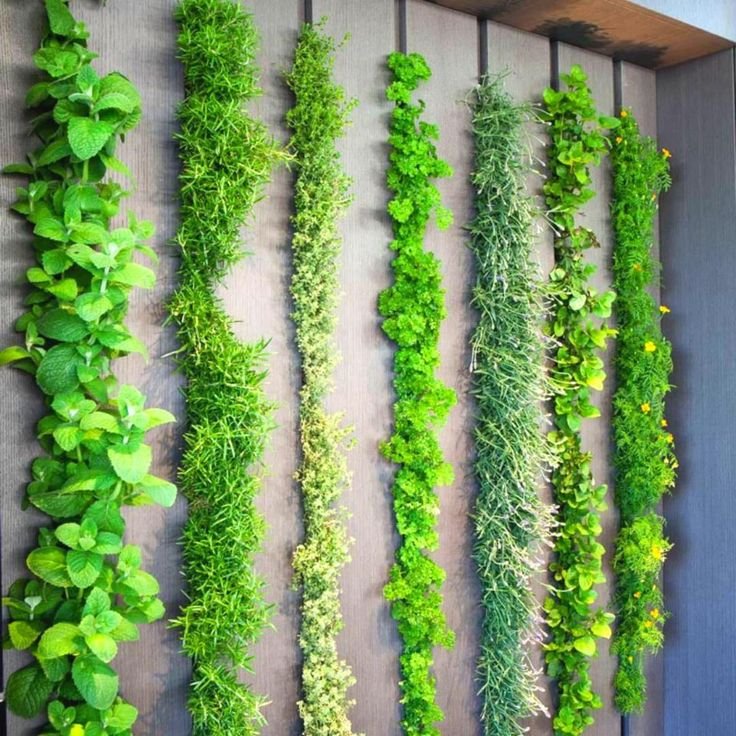
Before constructing a vertical garden, careful planning is essential:
- Choose the Location:
- Indoors: Near a sunny window with 6–8 hours of light.
- Outdoors: On a wall with partial to full sun, protected from strong winds.
- Select Herbs: Consider sunlight, growth habits, and culinary preferences.
- Measure Space: Determine wall dimensions and ensure the structure won’t overwhelm the area.
- Weight Considerations: Ensure the wall or mounting surface can support the weight of containers, soil, and water.
Proper planning ensures a functional and sustainable vertical herb garden.
Step 2: Selecting Herbs for Vertical Gardens
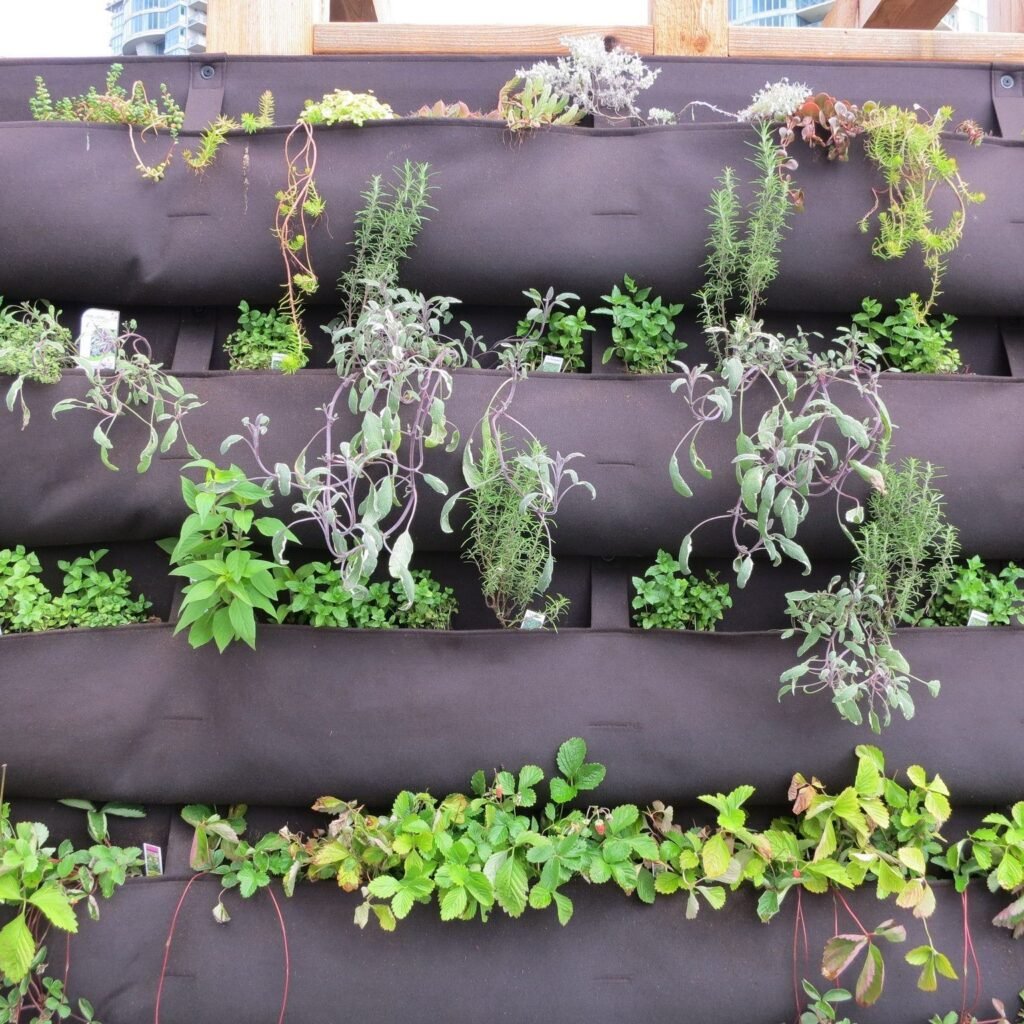
Not all herbs are equally suited for vertical gardening. Choose herbs that thrive in pots and don’t grow excessively tall:
- Sun-Loving Herbs: Basil, rosemary, thyme, oregano, sage.
- Partial Shade Herbs: Parsley, cilantro, chives, mint.
- Trailing Herbs: Creeping thyme, oregano, lemon balm, and trailing rosemary add visual interest.
- Growth Rate: Fast-growing herbs like basil and cilantro provide frequent harvests.
Mixing upright, compact, and trailing herbs creates a dynamic, aesthetically pleasing wall garden.
Step 3: Choosing the Right Containers
Container choice is critical for vertical setups:
- Pockets or Planter Bags: Fabric or felt pockets hold soil while allowing drainage.
- Wall-Mounted Pots: Ceramic, plastic, or wooden pots can be attached directly to walls or vertical panels.
- Recycled Containers: Mason jars, tins, or wooden crates provide eco-friendly options.
- Depth Consideration: Most herbs require 6–12 inches of soil depth for healthy root growth.
- Drainage: Ensure containers have holes or a drainage system to prevent waterlogging.
The right containers provide structural support, proper aeration, and soil stability for vertical herbs.
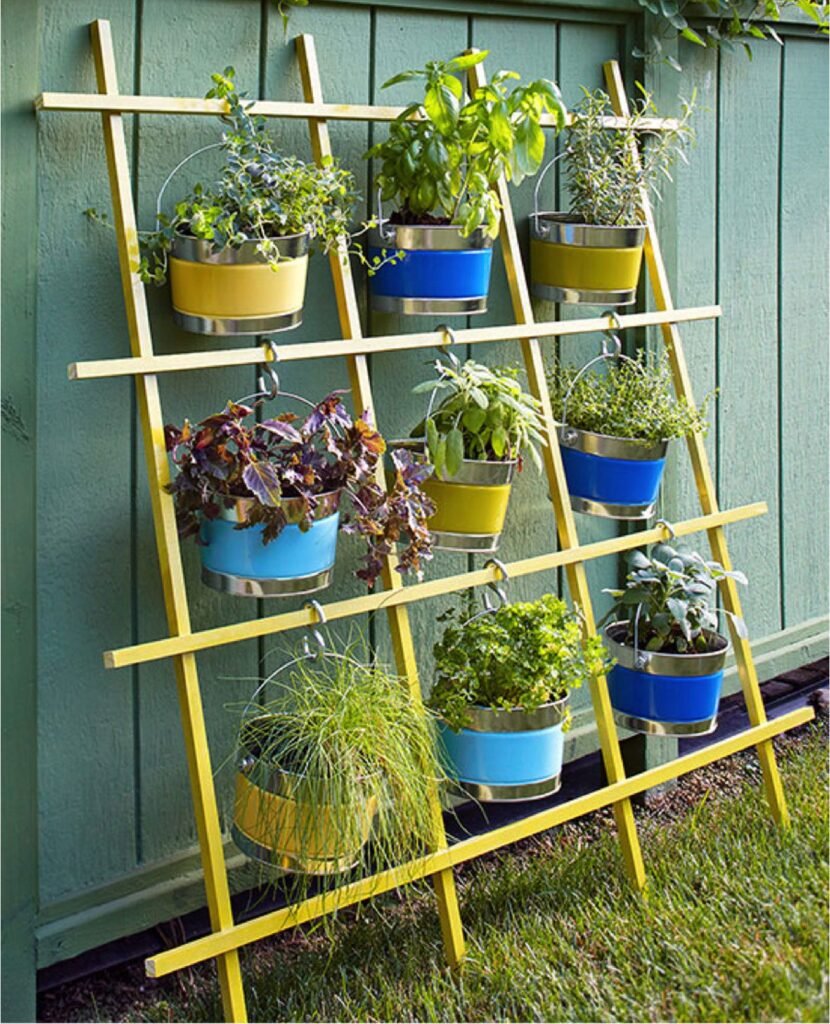
Step 4: Building the Vertical Structure
Several approaches can be used to mount herbs on a wall:
- Wooden Pallets: Attach landscape fabric to create pockets for soil and plant herbs in each slot.
- Hanging Shelves: Install multiple narrow shelves with small pots or trays.
- Metal Grids or Trellises: Hang pots or fabric planters on hooks attached to a sturdy frame.
- Modular Wall Panels: Commercial vertical garden panels simplify planting, watering, and maintenance.
Choose a method based on space, aesthetic preference, and budget. Ensure the structure is secure and stable, capable of supporting soil and water weight.
Step 5: Preparing Soil for Vertical Herbs
Herbs thrive in well-draining, nutrient-rich soil:
- Use Lightweight Potting Mix: Avoid garden soil, which compacts and retains too much water.
- Add Aeration Materials: Perlite, vermiculite, or coarse sand improves drainage.
- Incorporate Compost: Provides slow-release nutrients for healthy growth.
- pH Consideration: Most herbs prefer slightly acidic to neutral soil (pH 6–7).
Proper soil ensures healthy roots, vigorous growth, and reduced risk of root rot.
Step 6: Planting Techniques
Vertical gardening requires careful planting:
- Arrange Plants by Sunlight Needs: Place sun-loving herbs at the top and shade-tolerant ones lower.
- Spacing: Maintain enough space between plants for airflow and growth. Compact varieties can be closer, trailing herbs may hang over edges.
- Transplant Carefully: Handle roots gently, avoid overpacking soil, and ensure the crown is above the soil line.
- Layering Trailing Herbs: Position cascading herbs at the bottom or front to create a green waterfall effect.
Proper planting maximizes sunlight exposure, airflow, and visual appeal.
Step 7: Watering and Fertilizing Vertical Herbs
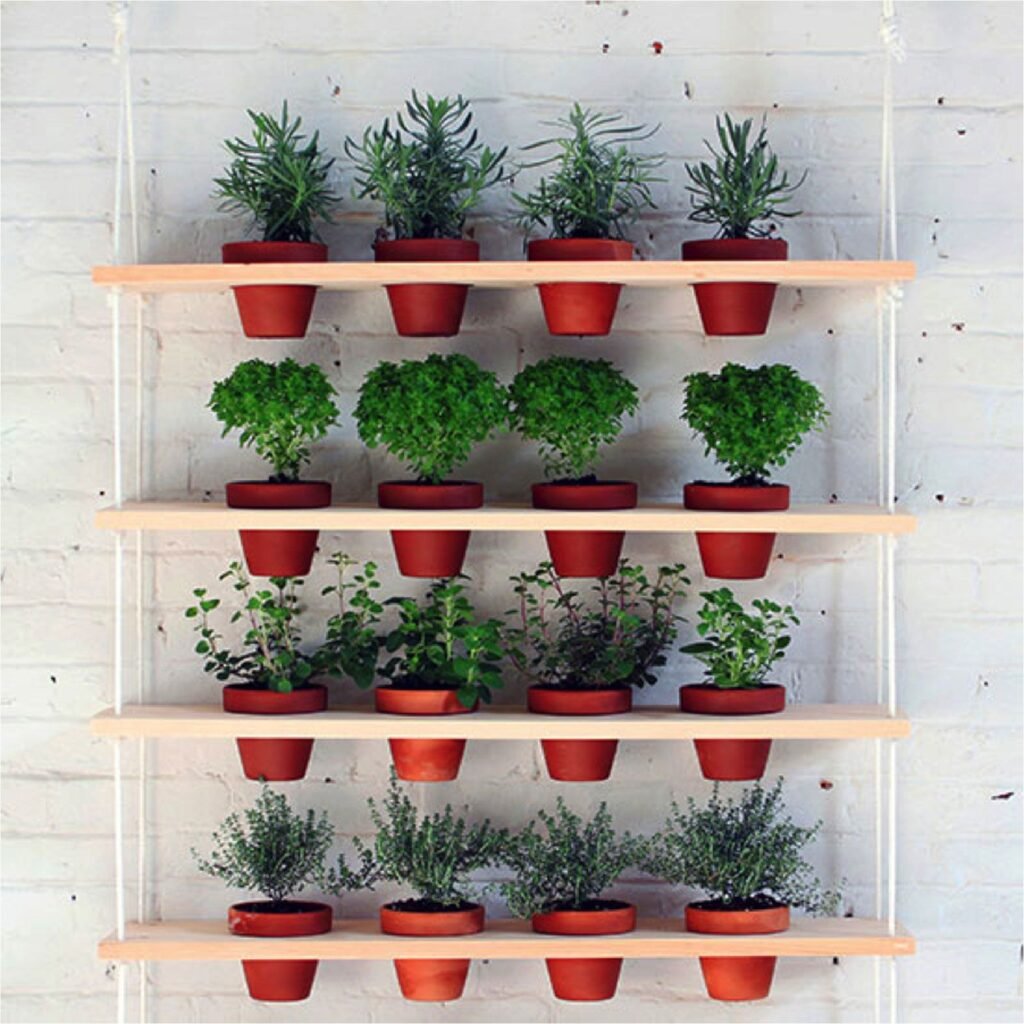
Vertical gardens require specific watering techniques:
- Water Thoroughly: Ensure water reaches all layers; top-down watering or drip irrigation works best.
- Avoid Overwatering: Drainage holes prevent stagnant water; let the soil dry slightly between watering.
- Consider Drip Systems: Automated drip irrigation ensures consistent moisture for each plant pocket.
- Fertilization: Use a balanced, water-soluble fertilizer every 2–3 weeks to provide essential nutrients. Organic alternatives like compost tea or liquid seaweed extract also work well.
Proper care ensures strong, productive herbs with flavorful leaves.
Step 8: Light and Environmental Considerations
- Sunlight: Most herbs need 6–8 hours of sunlight. Indoor setups may require LED grow lights.
- Airflow: Good ventilation prevents fungal disease and encourages strong stems.
- Temperature: Herbs grow best in moderate temperatures; extreme heat may require shading, while frost-prone areas need protection.
- Humidity: Indoor vertical gardens may need misting for dry climates, but avoid excess moisture that can encourage disease.
Balancing light, airflow, and temperature ensures lush, healthy vertical herbs.
Step 9: Maintenance and Pruning
Maintaining a vertical herb garden is essential for productivity:
- Regular Pruning: Harvest and trim leaves to encourage bushy growth and prevent overcrowding.
- Monitor for Pests: Aphids, spider mites, and whiteflies may infest herbs; use organic pest control or neem oil.
- Rotate Crops: Replace older plants with fresh seedlings to maintain continuous harvests.
- Inspect Soil and Roots: Ensure drainage remains efficient; refresh soil every 1–2 years.
Consistent care maximizes yield and prolongs plant lifespan.
Step 10: Harvesting Your Vertical Herb Garden
- Leaf Harvesting: Pick outer leaves first; avoid cutting more than one-third at a time to prevent stress.
- Frequent Harvest: Frequent picking encourages new growth, especially for fast-growing herbs like basil and mint.
- Flower Removal: Pinch off flowers to focus energy on leaf production unless you want seeds for propagation.
- Preservation: Fresh herbs can be dried, frozen, or infused in oils for long-term use.
Effective harvesting ensures a continuous supply of fresh herbs year-round.
Tips for Success
- Mix Varieties: Combine upright, trailing, and compact herbs for a visually appealing design.
- Use Companion Plants: Certain herbs repel pests when grown together (e.g., basil near oregano).
- Regular Observation: Check soil moisture, growth, and health daily.
- Seasonal Adjustments: Move indoor gardens closer to light in winter or provide shading during summer heat.
- Decorative Integration: Incorporate decorative pots, frames, or colors to enhance the aesthetic appeal.
These strategies enhance both productivity and visual impact.
Conclusion
Building a vertical herb garden on your wall is a creative and practical solution for modern, small-space living. By carefully planning the setup, selecting the right herbs, using suitable containers, building a sturdy vertical structure, and following proper planting, watering, and maintenance practices, anyone can enjoy lush, productive herbs at home.
Vertical herb gardens provide fresh, flavorful ingredients, improve air quality, and enhance home aesthetics. With patience, attention, and consistent care, your wall can transform into a vibrant, green oasis that brings nature, flavor, and beauty into everyday life.
A vertical herb garden demonstrates that space constraints do not limit gardening possibilities—with the right techniques, you can grow an abundant, healthy, and visually stunning herb paradise right on your wall.
